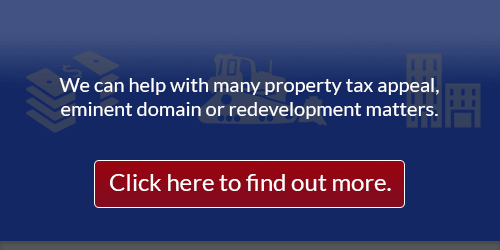Property Tax Caps Considered Across America
Property tax caps are legislative measures designed to limit the amount by which property taxes can increase annually. These caps are implemented to provide homeowners with financial predictability and to protect them from sudden and significant tax hikes that can occur due to rising property values. By controlling the increase in property taxes, these caps aim to prevent homeowners from being priced out of their homes due to escalating tax burdens. This is particularly important in times when property values rise significantly, as seen recently across many parts of the United States.
Historical Context
The concept of property tax caps is not new. For example, in 2010, New Jersey implemented a law under former Governor Chris Christie that capped annual property tax increases at 2%. However, this law included loopholes and exceptions that have often been exploited, leading to increases exceeding the cap. This ongoing issue highlights the complexities involved in balancing the need for revenue to fund essential services with the desire to protect homeowners from excessive tax burdens.
Other states, such as Alabama, Wyoming, and Kansas, have recently adopted similar legislation to curb future property tax hikes. Meanwhile, states like Colorado and Georgia are considering such measures through voter ballots. These efforts reflect a broader national trend toward regulating property tax increases to address the financial challenges faced by homeowners.
Impact of Property Tax Caps on Homeowners

Benefits
Property tax caps offer several advantages to homeowners. Primarily, they provide a level of predictability in tax bills, allowing homeowners to budget more effectively without the fear of unexpected increases. This stability is crucial, especially for those on fixed incomes or with limited financial flexibility. Additionally, property tax caps can help maintain community stability by preventing residents from being forced to relocate due to unaffordable tax hikes. In states with high property taxes, such as New Jersey, these caps can be a vital tool in preventing population loss and preserving the local economy.
Challenges
Despite their benefits, property tax caps also present challenges. One significant downside is the potential reduction in revenue for local governments, which rely heavily on property taxes to fund public services such as schools, police, and fire protection. When tax revenues are capped, governments may struggle to meet the financial demands of these essential services, especially in rapidly growing areas.
This can lead to budget shortfalls and force localities to find alternative revenue sources, which might include increasing the tax burden on commercial properties. Such measures could have unintended consequences, including stifling economic growth and creating disparities in tax burdens. Moreover, the reliance on caps can lead to underfunded public services, affecting the quality of life for residents.
Property Tax Caps vs. Real Estate Tax Cap
| Feature | Property Tax Caps | Real Estate Tax Caps |
|---|---|---|
| Definition | Limits on the annual increase in property tax rates. | Limits on the annual increase in taxes on real estate. |
| Scope | Generally applies to all types of property taxes. | Specifically targets taxes on real estate properties. |
| Purpose | To provide predictability in tax bills and protect homeowners from significant increases. | To manage the tax burden specifically on real estate properties. |
| Application | Can vary by state and may include exceptions or loopholes. | Often implemented as part of broader property tax reforms. |
| Impact on Revenue | May reduce local government revenue, impacting public services. | Can lead to shifts in tax burdens, potentially impacting real estate markets. |
Cases of Note:
- New Jersey: In 2010, New Jersey introduced a 2% cap on property tax increases, although exceptions have allowed for increases beyond this limit. This has led to ongoing debates about the balance between homeowner protection and funding for public services.
- Colorado: Recent legislation in Colorado aims to cap property tax revenue growth at 4% annually. This measure is part of broader efforts to address the rapid increase in home values and the associated tax burdens on homeowners.
- Wyoming: The state has enacted laws to cap residential property tax increases at 4% annually, without provisions to backfill lost revenue, highlighting the challenges of maintaining essential services under capped revenue conditions.
Current Trends and Future Outlook
Several states have recently enacted or proposed legislation to limit property tax increases. For example, Alabama, Wyoming, and Kansas have adopted measures to curb future property tax hikes, while Colorado and Georgia are considering similar initiatives through voter ballots. These efforts reflect a growing recognition of the need to balance tax relief for homeowners with the financial needs of local governments.
As property values continue to rise, particularly in urban and suburban areas, the pressure to implement property tax caps is likely to increase. Economic forecasts suggest that states will need to find innovative solutions to balance tax relief with funding for essential services. This may include exploring alternative revenue sources or adjusting existing tax structures to accommodate the changing economic landscape. Demographic changes, such as population shifts and aging communities, will also play a critical role in shaping future property tax policies. States may increasingly rely on targeted tax relief measures to support vulnerable populations, such as low-income families and retirees, while ensuring sustainable funding for public services.
Conclusion
Property tax caps have become a crucial topic across the United States as homeowners face rising property values and, consequently, higher tax burdens. These caps are designed to offer financial predictability and relief by limiting the annual increase in property taxes. However, the implementation of property tax caps presents a complex challenge, as it must balance the need for local governments to fund essential services with the financial protection of homeowners. States like Alabama, Wyoming, and Kansas have taken legislative steps to curb property tax hikes, while others, such as Colorado and Georgia, are considering similar measures.
New Jersey’s experience with a 2% cap, despite its loopholes, highlights the ongoing struggle to find effective solutions that address both homeowner and governmental needs. The debate over property tax caps underscores the broader issue of how to distribute tax burdens equitably without stifling economic growth or compromising public services. As this issue evolves, it is essential for homeowners and policymakers to stay informed and engaged in discussions about property tax legislation.
If you’re a property owner concerned about your real estate tax cap and potential tax increases, consider consulting McKirdy, Riskin, Olson & DellaPelle, P.C. Our experienced attorneys can help you determine if a property tax appeal is right for you.
Although the deadline for 2024 appeals in New Jersey has passed, you can still learn about potential reductions in your property tax bill by downloading our white paper or contacting us for a complimentary evaluation of your property tax assessment. Stay proactive and informed to ensure you’re making the best decisions for your property and financial well-being.









